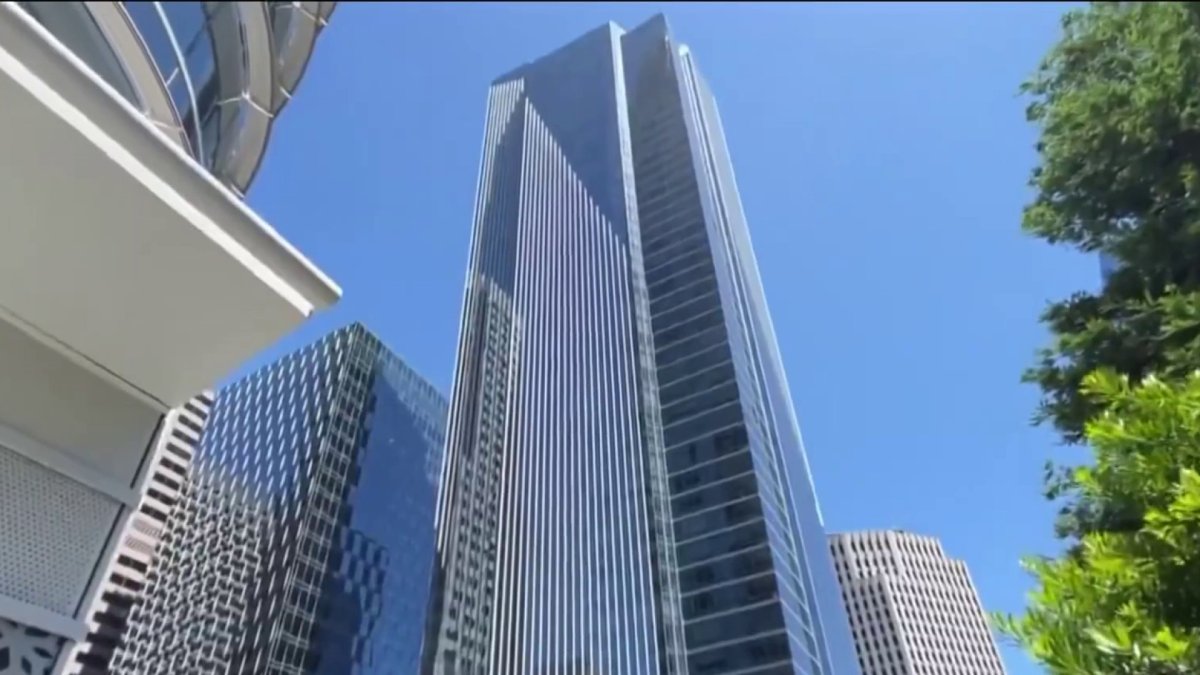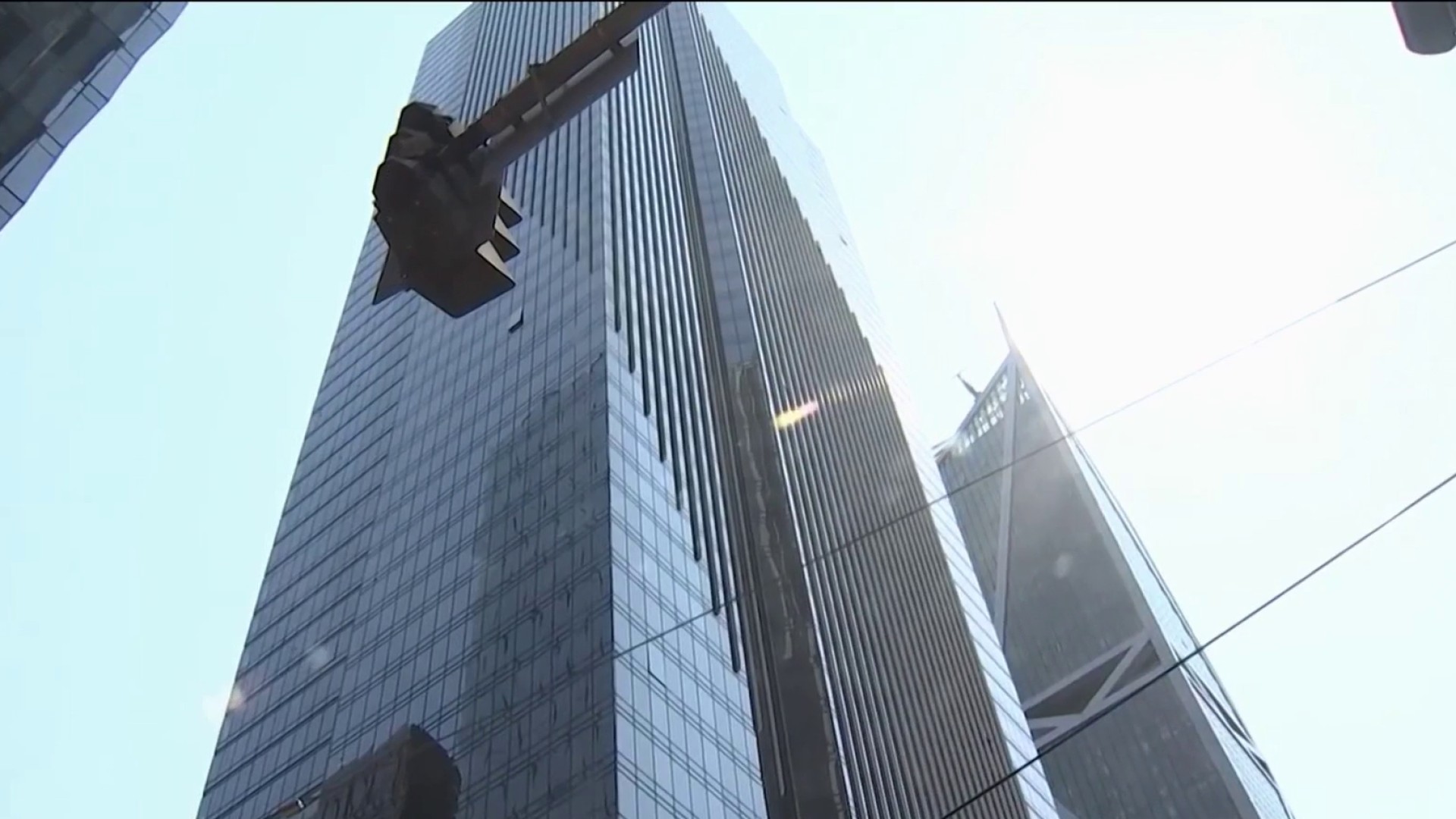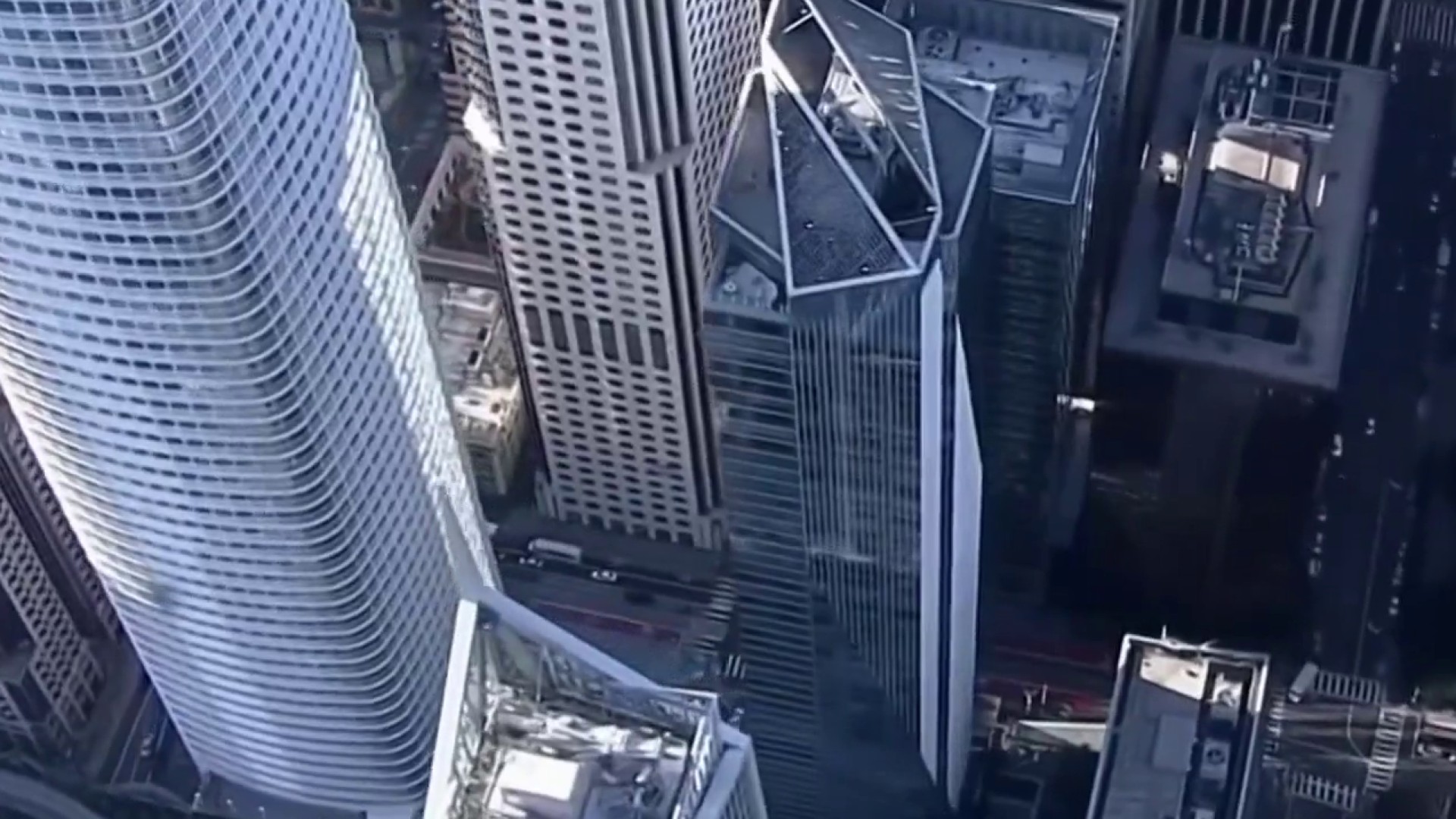
NBC Bay Area’s Investigative Unit has learned that a recent acceleration in tilting of the Millennium Tower has prompted engineers in charge of the so-called “fix” to employ an unconventional strategy to prop up the building so as to stop it from leaning further while the rest of the work gets done. Jaxon Van Derbeken reports.
NBC Bay Area’s Investigative Unit has learned that a recent acceleration in tilting of the Millennium Tower has prompted engineers in charge of the so-called "fix” to employ an unconventional strategy to prop up the building so as to stop it from leaning further while the rest of the work gets done.
The $100 million retrofit project – partially paid for by taxpayers as part of a resolution of litigation – was supposed to keep the building from sinking and tilting more and stabilize property values. But since work began on installing support piles in May of last year, the problems have gotten worse, not better. To stem the damage, engineers opted to cut the number of new foundation support piles from 52 to 18.
While the city has yet to sign off on that scaled back plan, new problems emerged when engineers began the digging needed to construct underground shoring walls to allow the foundation to be extended. Monitoring data showed the tower had listed another 2.75 inches west, toward Fremont Street, in just the first half of the year – and the building’s tilting hastened in May when digging began for the underground wall on Fremont Street.
Fix engineer Ron Hamburger had predicted the tower would tilt an additional three inches westward for the entire year.
“The building does continue to settle at a rate of about one half inch per year and to tilt at a rate of about three inches per year,” Hamburger told the city supervisors’ government oversight and audits committee on Jan. 6 of this year. “It is doing this whether we are conducting work at the site or not.”
Hamburger promised that if the building tilted more than three inches to the west, he would reevaluate the strategy.
In a statement, the Millennium Tower Homeowners Association said they responded as soon as monitoring data showed “increased building tilt to the west.” That’s when they opted to halt the half-completed work along Fremont on May 26, to give them time to devise an alternative.
To prevent more tilting while construction continues, fix engineers will change the sequencing of the project. Rather than try to shore up the Mission and Fremont street sides of the foundation simultaneously, they are going to partially anchor just the northwest corner to piles already installed last year, essentially propping it up near the corner.
“This will stabilize the structure and help us to complete the work on Fremont street without additional tilting,” Millennium fix officials said in the statement, while stressing the additional tilting this year never endangered building safety. When work was shifted to the corner of Fremont to Mission in June, fix authorities said, they did not see more tilting during the digging there. They say that gave them confidence they could tie the building to bedrock at the corner without making the tilting worse.
Get a weekly recap of the latest San Francisco Bay Area housing news. Sign up for NBC Bay Area’s Housing Deconstructed newsletter.
But critics of the fix are taking a wait and see attitude, saying the latest problem was totally predictable.
“There's no question that the fix has made things worse,” said Bob Pyke, a veteran geotechnical engineer who has advised Caltrans and federal agencies on large construction projects. He said that tilting was the side-effect of the digging needed to erect the planned underground shoring wall on the west side of the foundation. Like the digging last year to install foundation piles to bedrock, any disturbance from construction can displace dirt that had been acting as a buttress against the tower’s foundation, Pyke says.
“This ground loss simply allows the building to push outward in the westerly direction where they're working along Fremont Street,” he said. “It's similar to but a different mechanism in detail from what caused the settlement during the installation of the casings in the piles.”
San Francisco building officials say they have been consulted on the changes, but stress that Millennium engineers are solely responsible for the outcome.
As it stands, with the additional tilting since work on the underground wall along Fremont started in May, the tower is now leaning at least 29 inches at the top at the northwest corner.
That leaves a shrinking margin for error, given Hamburger’s caution that the tower’s safety systems -- like elevators and sewage lines -- could stop working should the tower lean 40 inches or more.



